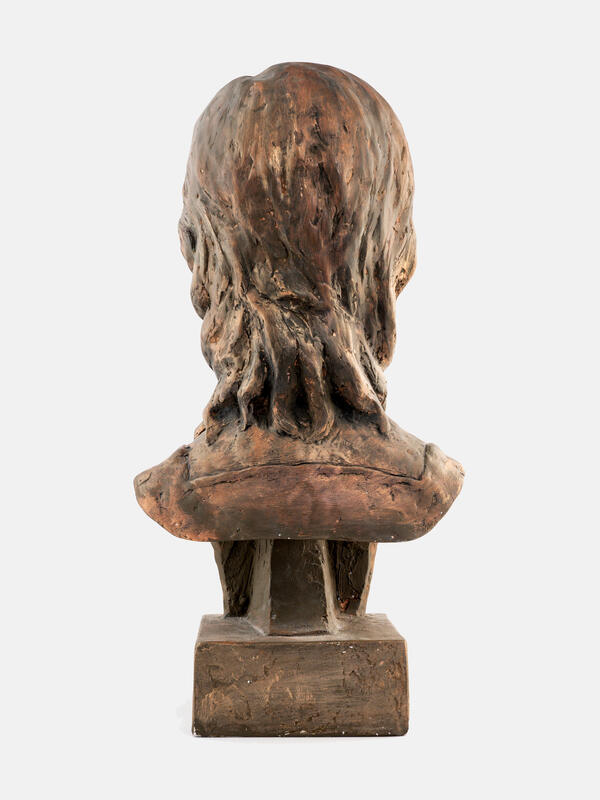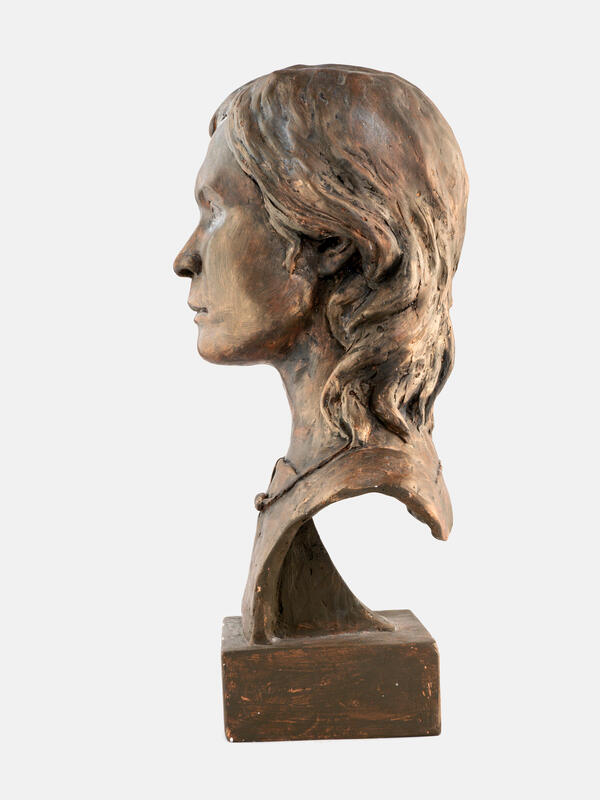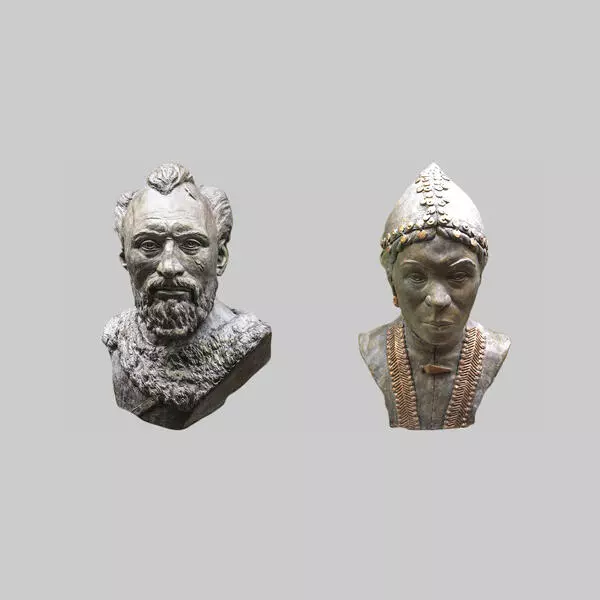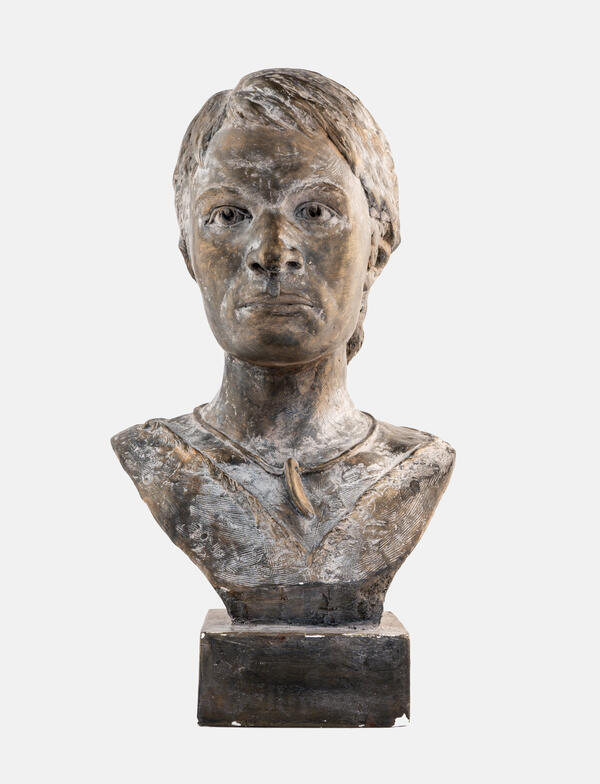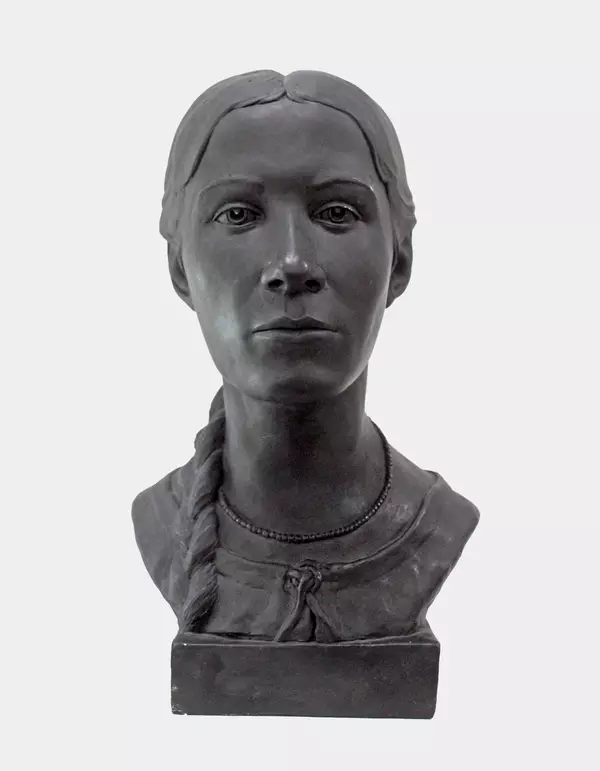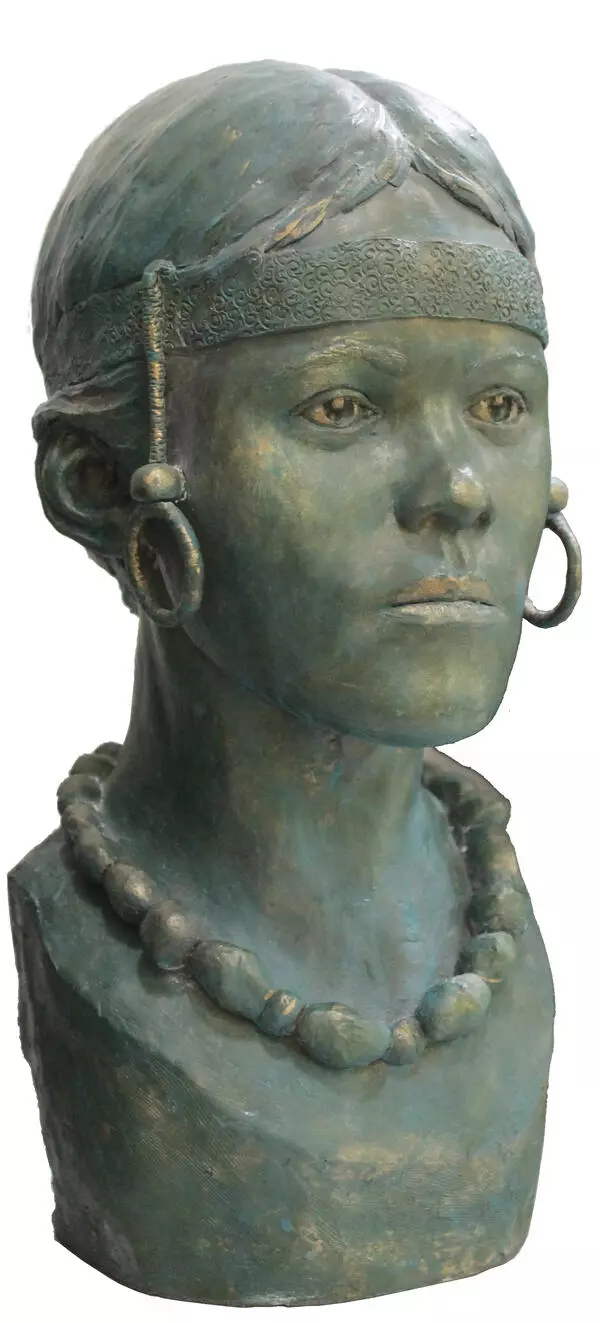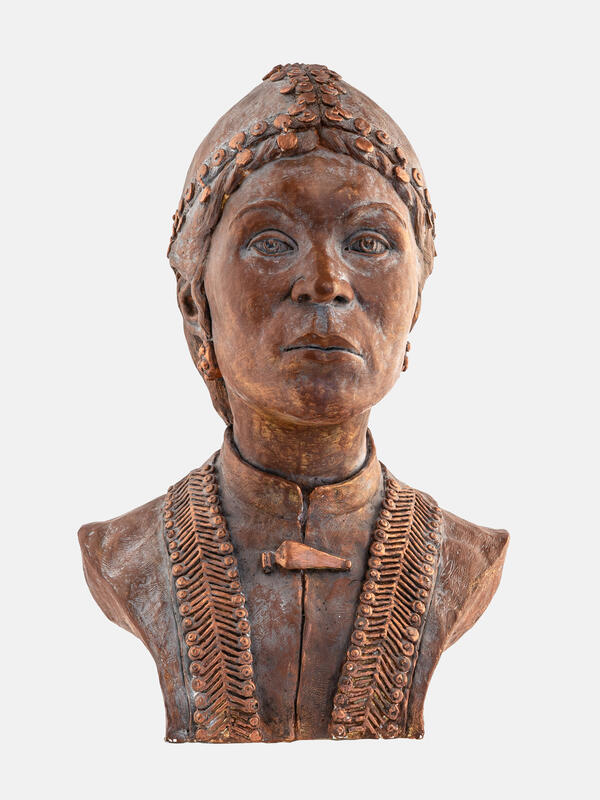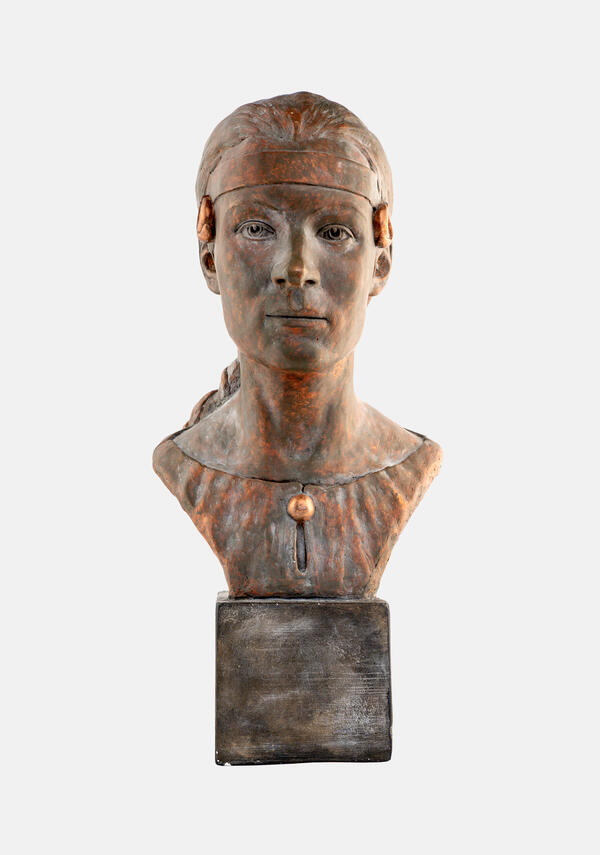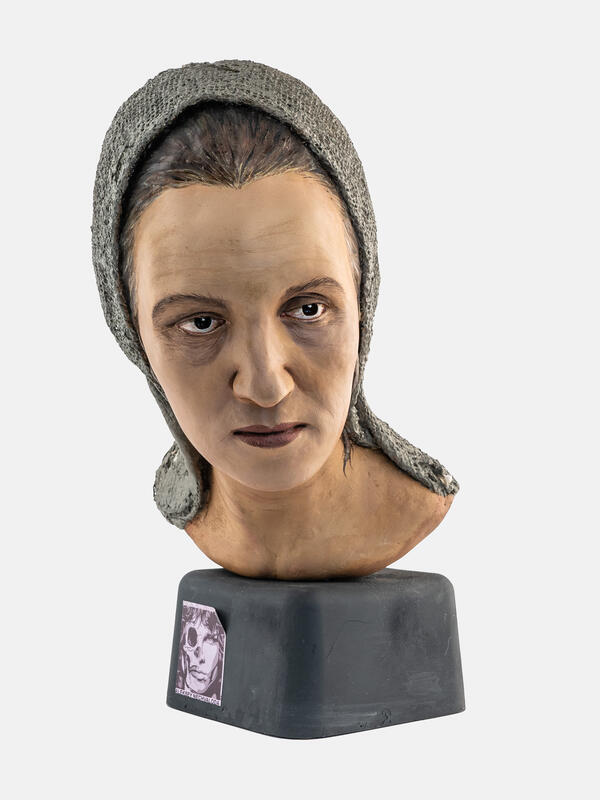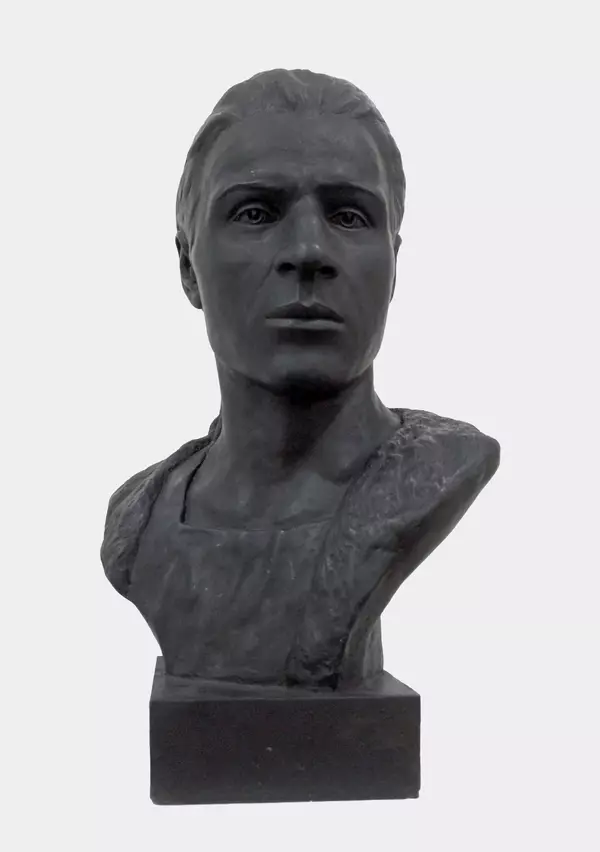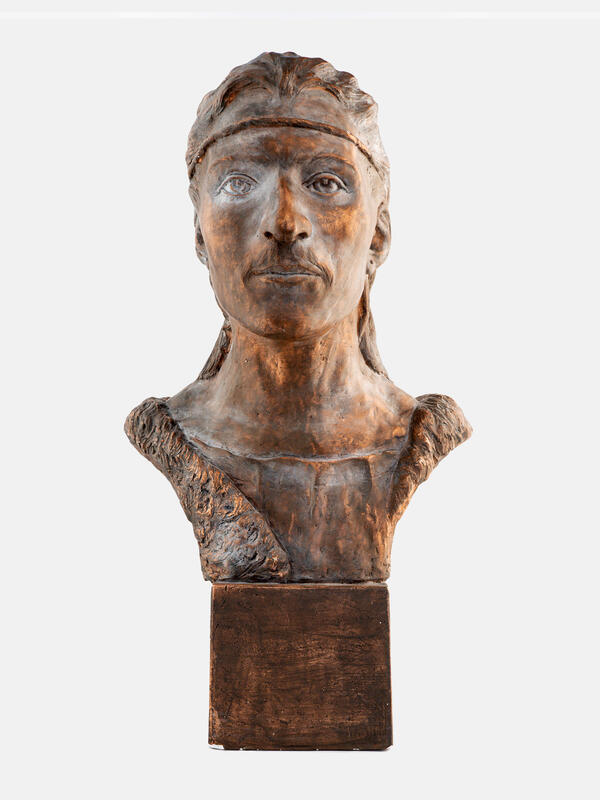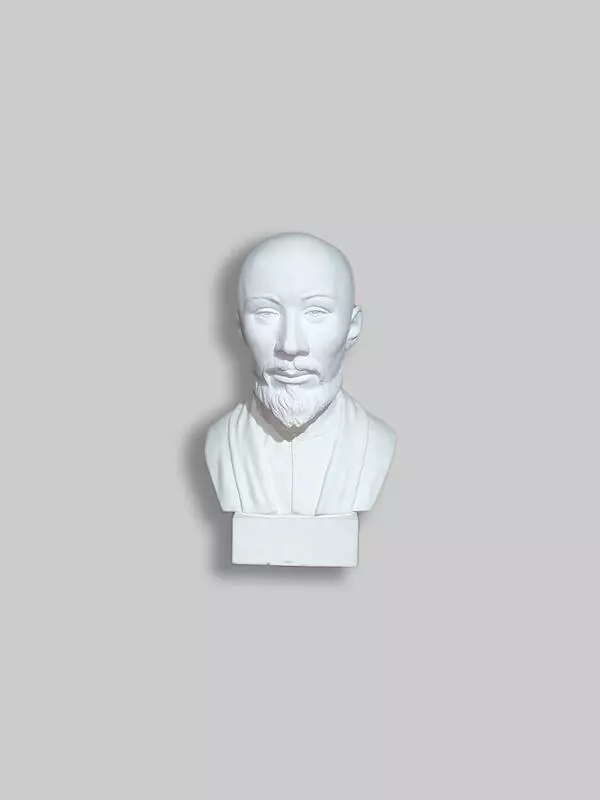The sculptural reconstruction of the face is based on the skull of a woman, which was discovered in mound 2 of the Kizilsky I burial ground. The mound was studied under the guidance of the archaeologist Tatiana Sergeevna Malyutina in 2009.
During the excavation of the burial ground three skulls were found — one of a man, one of a woman and one of a child. The skulls of the man and woman are dolichocranial (a skull shape characterized by a significant predominance of the longitudinal diameter over the transverse diameter). They have a broad, taller, mostly sharply horizontally profiled face, sloping forehead, and a medium or small angle of occipital flexure. These features are close to the characteristics of the Pit Grave Eastern European cranial series. The specific feature of this series is a small protrusion of the nasal bones.
The anthropologist Alexey Nechvaloda carried out a number of skull reconstructions of Bronze Age and Early Iron Age monuments for the exhibition and projects of the “Arkaim” Museum-Reserve. The reconstruction of the physical appearance of people who lived in the distant past begins with the determination of age, sex and individual features of the person under study — these are traces of injuries and chronic diseases, deformation of the mouth when teeth fall out, and age-related changes. Anthropologists determine the age by tooth abrasion and cranial sutures, as well as by the results of the study of the facial skeleton.
The next stage is the restoration of the external appearance based on the skull. This technique, which continues to be perfected today, was developed by the famous anthropologist Mikhail Gerasimov. He revealed the dependence between the structure of bones and the thickness of muscles on them. The technique involves the restoration of masticatory muscles, which determine the outline of the lower half of the face. Using tables of soft tissue thickness in different parts of the head, the surface of the face is formed, and then the parts — nose, eyes and mouth — are modeled. The work is completed by reproduction of hairstyle and clothes according to historical data. A mold, removed from the bust, is used to make plaster or plastic copies, and the skull that was used is returned to the repository.

